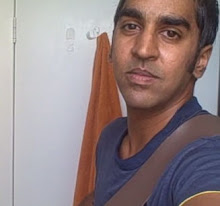Understanding Supply
To understand money supply, it is crucial to note that in under current monetary policy, money is created out of debt. This happens in two ways:
1. Money is created when governments need to borrow, and central banks then print money and buy treasury bonds
2. The money supply is then expanded again when banks loan money; banks are allowed to loan out 10X the money they have in deposits, and thus expand the money supply when they loan.
Because money comes out of debt, we can extrapolate two further points:
1. If there is no more debt -- meaning if lenders are not willing to lend and borrowers are not willing to take on more debt -- the money supply will have difficulty expanding.
2. Paying off debts results in decreasing the money supply. Ironically, if all debts were repaid, there would be no money.
There are a number of ways to calculate the money supply; see our previous post on this subject. The Mises Institute also offers a free tool to let you compare various money supply indicators.
Understanding Demand
The following can help you gauge demand for a currency:
- Trade flows
- Capital flows
- Reserve currency status -- do other central banks hold the currency in question as part of their reserves? Are they changing their reserves?
- Commodity prices -- If commodity prices are rising, the currency is likely weakening
Discuss on InformedTrades
